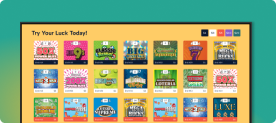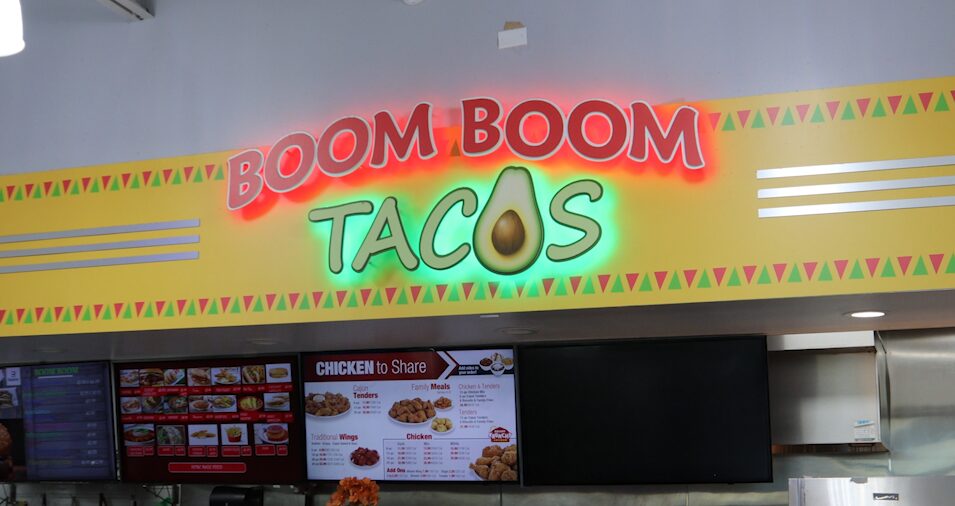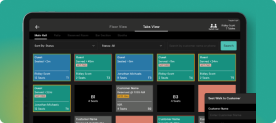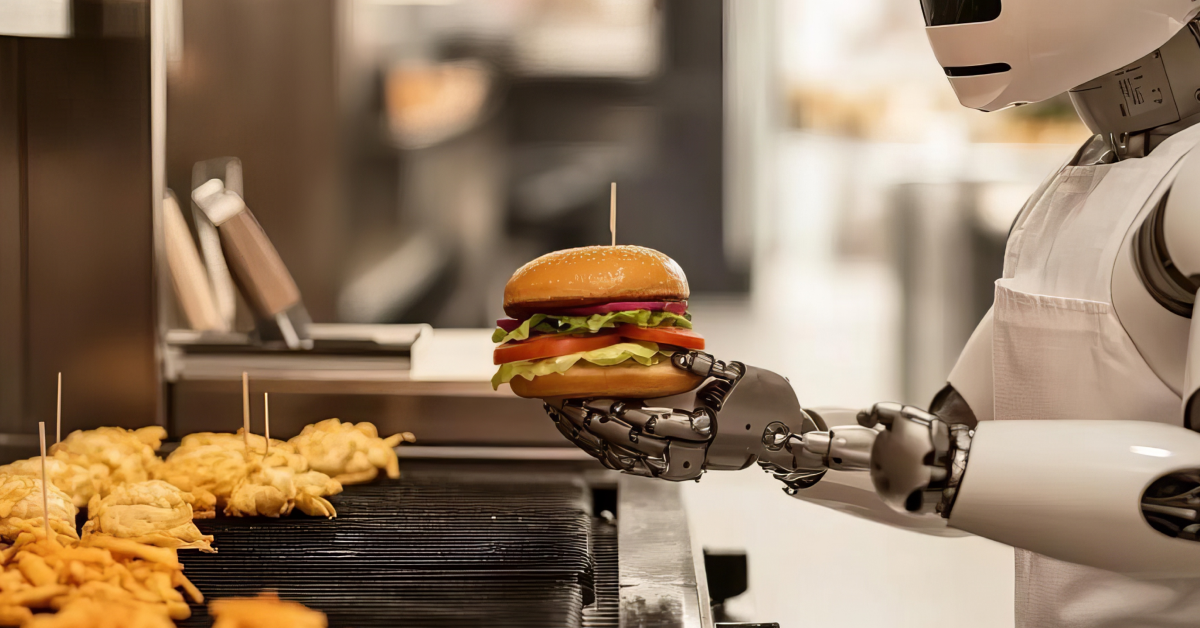Starting your own restaurant can feel like a daunting and exciting process all at once. In this guide, you’ll learn the checklist you should consider before opening your doors and how to manage your business as you get started.
Steps to Get You Started
Create a Business Plan
A business plan should include an executive summary, company description, industry analysis, geographic analysis, target market research, a food safety plan, potential menu, marketing ideas, management strategy, and financial plan. Anything that pertains to your business should be within the plan and approved by the right people in order to begin your business idea.
Know Your Startup Costs
Being aware of startup and operational costs helps you determine how you finance your restaurant. From an investor to a small business loan, make sure to check what options are available to you in order to get your business up off the ground. With an idea about cash flow in the financial plan, you can adjust costs accordingly and prioritize what needs to be done.
Get The Necessary Licenses and Permits
There may be multiple licenses and permits you need to attain in order to open your doors. While a standard business license can get you started, there are still food permits and liquor licenses that should be considered. This looks different for every region, which means it is important to do your research and know what you need for specific locations.
Register Your Restaurant
Register your business with the IRS to get an Employer Identification Number that is necessary for filing taxes. Consider trademarking the name of your business as well to protect your restaurant from potential poachers who want a piece of your success.
Define the Menu, Atmosphere, and Location
Visibility, foot traffic, and the right name can all contribute to the success of your business. Make sure to location scout and know what area may be right for your floor plan idea, the type of customers you plan to attract, and the menu that potentially will be offered. While some of this may change when the doors open, it is important to start out strong.
Order the Right Equipment
Equipment is a necessary part of running a business and can be costly for restaurants. Be strategic about whether to buy or lease items and stick to the basics for what you absolutely need. Consult your financial analysis to determine where finances can be allocated.
Hire Personable Staff
Make a list of staff members you need in order to run front and back of house efficiently. From there, you can look for personable staff who are the right fit for your team. While payroll can be quite complex with differing laws and regulations that surround tips and wages, you can simplify the process through payroll software that makes it easy to track payments.
Manage a Marketing Initiative
A marketing initiative is an important part of spreading awareness about your new restaurant. Google ad placement, social media campaigns, email marketing, and word-of-mouth can all contribute to awareness. Utilize current marketing trends to leverage your business towards success.
Create The Ideal Menu
To tie everything together for your restaurant business plan, create the ideal menu you want to serve. The menu should reflect the core ideas of your business and is the centerpiece that draws customers in. Descriptions for menu items should be clear and convey the concept of your restaurant with precision.
Where You Fit In The Restaurant Industry
Knowing the competitive landscape you are entering into is an important aspect of strategizing how you plan to open and market your restaurant. Restaurants are categorized into five different types. Depending on your type of restaurant, there may be different expectations and requirements in the industry.
Fast Food Restaurant
Fast food restaurants are also called quick-service restaurants, or QSRs. Quick service means fast preparation and casual service with limited seating and customers more often getting takeout.
Fast-casual
Fast-casual mirrors fast foodservice by offering freshly prepared food that is high-quality. Establishments like this typically do not offer seating, but do have higher prices due to the ingredients in their food.
Casual Dining
Casual dining is a full-service establishment at an affordable price. The atmosphere is often relaxed where customers sit down and enjoy a meal without having to spend too much.
Family Dining
Family dining does not serve alcohol and often offers breakfast, lunch, and dinner options. Establishments are similar to casual dining but are often seen open for longer hours due to the wide range of menu options.
Fine Dining
Fine dining is an upscale dining experience that has a higher price point. Customers have high expectations for service, top-quality food, and a classy atmosphere. Fine dining usually serves alcohol and can feature multiple course meals.
Understand Restaurant Safety and Food Protocol
There are several regional, state, and federal agencies that play a role in safety measures for food handling. The guidelines for handling food and beverages are created to ensure there are no food-borne illnesses and to keep customers safe.
The Food and Drug Administration (FDA), The Centers for Disease Control and Prevention (CDC), and Food Safety and Inspection Services (FSIS) all contribute to the rules that should be abided by. The rules depend on the type of food you serve, as well as what should be in your restaurant to ensure safe food processes.
If you are looking at opening multiple locations, make sure you read and understand the guidelines for each specific location. Your restaurant will go through several inspections around safety and operational compliance. This can include food handling, food storage, employee hygiene, and operational excellence.
The Cost of Opening a Business
Restaurant opening costs can vary depending on the location, what you offer, and staff requirements. While starting a business can be costly, it is not impossible with the right steps in place. Remember to keep costs low where you can and keep the budget that is listed in the financial plan. If you are unsure whether you can meet the demands of the costs, consult financing options for a small business loan.
Payment Processing
Getting your first sale at your restaurant can be exciting. With the latest technology, you can have a seamless experience through a payment processor and point-of-sale (POS) software. A payment processor is able to handle credit and debit card transitions with no hidden fees.
With intuitive software like Modisoft, you can take payments quickly, which means you have a fast turnover rate for customer retention. An integrated POS system also can include magstripe, EMV chip, and NFC mobile payments that can help make the process smoother.
Make sure your restaurant POS system includes,
- Inventory tracking
- Built-in tipping and automatic tip reconciliation
- Menu adjustment capability
- Employee timecards and payroll
- Data analytics
- Immediate customer insights
- Multiple menu management
- Customizable floor plans
- Effective communication channels between servers and chefs
Be a Strong Brand In Your Industry
A restaurant may be a business, but it is also a brand. By creating a strong brand that customers can identify with, you are building a path towards expansion and growth with reliable customers that continually return. Your brand should set you apart from other restaurants in the industry, and be a destination worth visiting. Here are a few steps to get you started in creating a strong brand.
Develop a Company Profile
A brand profile starts with the understanding of products, placement, promotion, price, and target market. Identify unique selling points and what sets you apart from other brands in the local area.
Pair Concept With Location
Not every concept works with every location. From the type of food you offer to the general atmosphere of the place, it is important to know the accessibility of the restaurant, what locals are looking for, and be aware of who the competitors are in the area.
Know What You Stand For
A mission statement can help steer your business where it needs to go. This can include what you do, who you are as a business, and why you enjoy running a restaurant.
Communicate With Efficiency
Communication is key when running a business and that includes how you communicate with your customers. Be clear, memorable, and have visual elements that offer an experience. Consider what you want for a name, logo, decor, staff uniforms, website content, and other marketing channels for a clear brand presence.
Host a Soft Opening
A soft opening invites people to start talking about your restaurant. It is also a way for staff to have a practice run on what is expected and to receive feedback on menu items. Take time to consider what could really benefit your business and the awareness it can attract with a soft opening that competitors will be buzzing about too.
Bring a Voice To Your Marketing
In your initial business plan, there should be a marketing initiative to consider. Take a look at what voice you want to portray in your marketing across social media, content marketing, email newsletter, word-of-mouth, and TV or radio ad placement. By knowing exactly who you want to reach, you can form a marketing plan that brings in more customers and establishes long-term loyalty.
Watch For Restaurant Trends
As a restaurant owner, you want to stay ahead of the trends. Technology, in particular, is changing how customers interact with restaurants and that includes online ordering and takeout. Offering a variety of options for pickup, dining-in, and delivery, your customers are able to access the great food you have to offer in whatever way is most comfortable for them.
Ask For Feedback
With an online ordering system, you can get instant feedback from customers and ask how they felt the experience and food was. Real-time data can help you determine what menu items to keep, how to optimize the customer experience, and create more positive reviews.
Accept Mobile Payments
Mobile payments like Apple Pay have become a vital source of how customers choose to pay. Some of the many benefits include increased security, faster payments, and general convenience.
Self-Serve Ordering
Automation is becoming more popular for contactless ordering and serving. QR codes allow customers to scan to order and pay for food. This takes away the unnecessary risk for servers, as well as creates an encapsulated experience that is changing how restaurants go about business.
Delivery and Takeout Options
Food delivery service has increasingly become more popular and is an entirely new market for many businesses. Adding a delivery or pickup option to your restaurant can increase your sales and help you stay ahead of the game in an otherwise competitive market.
Consider the steps in the guide before you open your doors. Keep in mind every restaurant is different, which means you have the opportunity to create a business plan, marketing initiative, and customer experience that is unique to you and your future success.






















